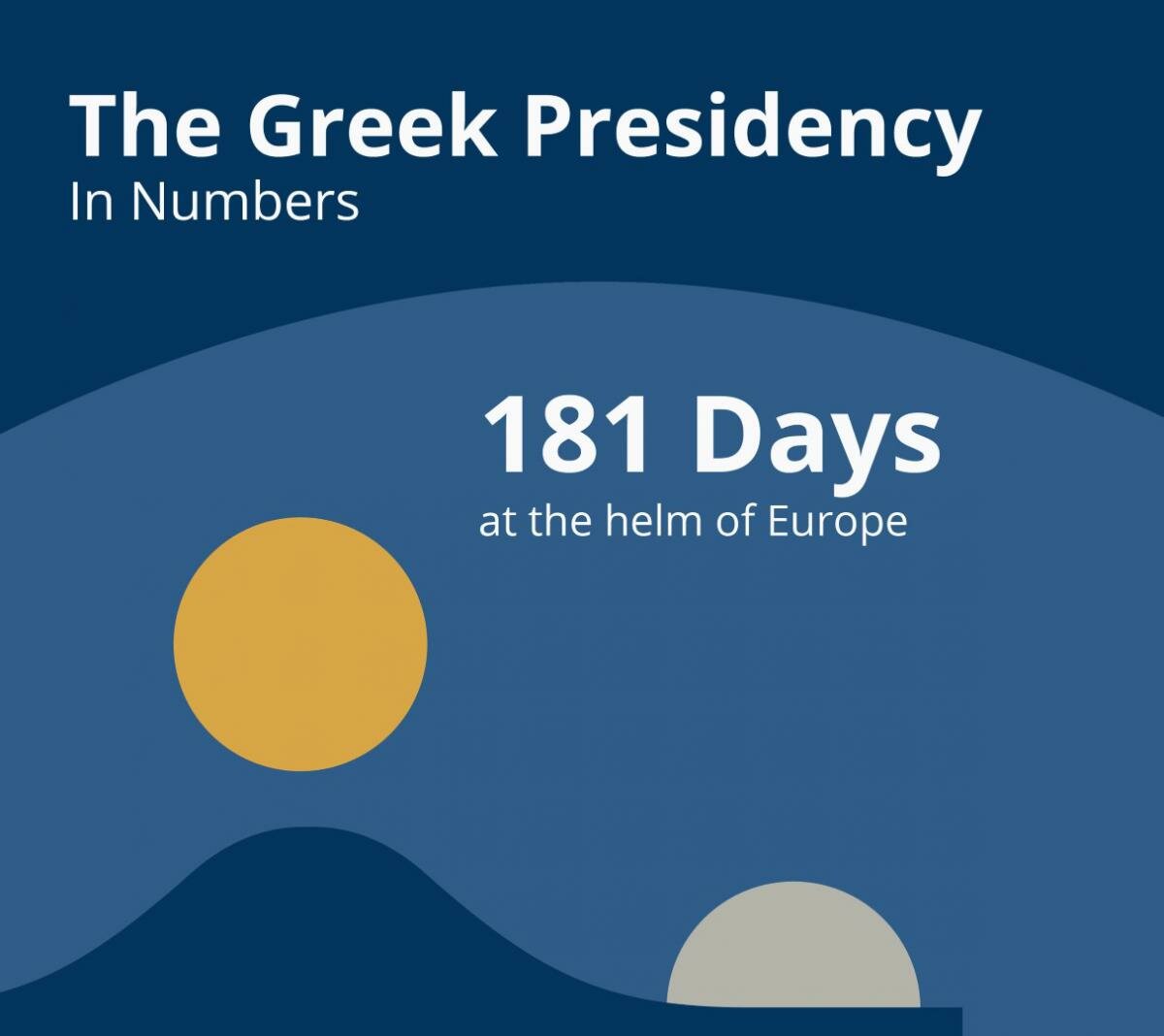On 10-12 March, Thessaloniki, already designated European Youth Capital for 2014, is hosting a EU Youth Conference, which focuses on the social inclusion of young people, organized by the Greek Presidency with the support of the European Commission.
Take a stroll around the city, and find out about its youthful character, cultural life, rich culinary tradition and nightlife.
A stroll around Thessaloniki
Don’t miss out on the Old Town district for a starting point to a stroll around the city. Spared in the 1917 great fire, Ano Poli (Upper Town) retains its Greek and Ottoman architecture with narrow, stone paved streets. It is also home to most of the city’s UNESCO World Heritage Byzantine Monuments. But more importantly, as the city’s highest point, Ano Poli offers amphitheatric views of the city and Thermaikos Gulf, all the way to Olympus Mountain, and the city’s long waterfront.
Thessaloniki’s iconic waterfront has long served as its symbol. It features a 6km-long promenade, the White Tower and, following its recent revamping, twelve thematic parks. The café-lined "old waterfront" culminates at the magnificent Aristotelous Square. Designed by the city’s signature architect Ernest Hébrard, the square features a monumental opening to the waterfront. Its two quarter-circle sides host landmark Electra Palace Hotel and Thessaloniki Film Festival venue Olympion Movie Theatre, as well as many of the city’s extra stylish cafés and restaurants.
On the East, located by the Aristotle University, the Rotunda district is the city’s unofficial student quartier. Spread around the main meeting point Arch of Galerius, this bohème neighbourhood hosts bookshops, take-outs, alternative cafés, bustling open markets and a round-the clock, campus-like buzz.
The commercial heart of the city lies to the West, with Modiano Market at its centre. Named after its designing architect Ely Modiano, the glass-roofed building features two arcades that host an oriental-like bazaar of fish, meat, fruit, vegetables, flowers, spices, and delicacies, as well as many tavernas, street musicians, and tsipouro bars.
What’s On?
With a history of 76 years, the Thessaloniki International Fair (TIF) is a major commercial event of traditionally important sociopolitical connotations. Every year, in September, Greece’s Prime Minister inaugurates the Fair, with the opening speech considered a gauge for the country’s economic policy issues. The vast premises, the multitude of participating companies and authorities and the many events that run parallel to each year’s session have made a visit to the TIF an all time classic September tradition for Thessalonians and beyond.
Demetria Festival is Thessaloniki’s biggest culture festival, taking place from September to December every year. The festival, named after the city’s most important medieval fair honouring patron Saint Demetrius, revived in 1965 under the historical name. Having already concluded its 48th edition, Demetria features artistic performances, exhibitions and scientific conferences.
The country’s biggest cinema celebration has its annual appointment every November in Thessaloniki. Thessaloniki International Film Festival, already in its 55th year, brings together films from all over the world, lectures, discussions, exhibitions and master classes. Cinema lovers flood the festival’s venues at the warehouses of the port, while premieres, parties and cinema talk take over the whole city. Thessaloniki Documentary Festival, is a smaller-scale alternative event organized by the city’s CineFest and focusing on breakthrough documentary production from all over the world.
Thessaloniki Cultural Crossroads is a five-year programme that brings some of the world’s greatest cultures to the port city. 2011 was dedicated to the Middle Eastern cultures, Balkan cultures and China followed, while 2014 is dedicated to Russian culture. All cultural agencies of the city host related events.
Thessaloniki International Book Fair, taking place annually in May, is a reference point for all SE Europe book trade and booklovers. A wide array of events accompanies the Fair, which is traditionally followed by its Greek version, whose books stalls take over the city’s waterfront for almost the whole of June.
A Cultural Hub
The city was the 1997 Cultural Capital of Europe and is an education and culture haven all-year round. Thessaloniki hosts some of Greece’s most important museums. It is also home to the Aristotle University, Greece’s largest, as well as the International Hellenic University and the University’s School of Modern Greek Language.
The city’s large collection of museums includes the Archaeological Museum, the Museum of Byzantine Culture (2005 Council of Europe Museum of the Year), the State Museum of Contemporary Art, the Jewish Museum of Thessaloniki, and the Museum of Photography. The city’s theatre life centre is the National Theatre of Northern Greece, housed in one of the most iconic buildings of the city. The old Lazaristes Monastery has been transformed in a cultural centre hosting a National Theatre venue, as well as the Contemporary art museum. Thessaloniki’s Concert Hall, situated at the Eastern end of the waterfront is also one of the city’s favourite cultural and Architectural spots.
Food
The city’s rich multicultural history sets its cuisine apart from the rest of Greece. Thessalonian gastronomy is a unique blend of Oriental spices, Mediterranean flavours and the seafood wealth of Thermaikos Gulf. But mostly it’s a love of cooking and a devotion to unhurried, long meals that makes Thessaloniki eateries great. Although international cuisine restaurants abide, the city’s best eating experience is the traditional ouzeries and tavernas that specialize in appetizers (mezedes). In fact, they feature such an extensive array of wholesome and fulfilling mezedes that a meal of only starters is quite common. Favourite Thessaloniki dishes include bouyourdi (peppers and tomatoes oven-baked with lashings of cheese), cheese, spinach or meat-filled bougatsa pie, and spicy saganaki mussels (with tomato and cheese). The Constantinopolitan heritage of the city provides mouthwatering sweets, such as kazan dibi (an oriental type of mastic-scented crème-brulée) and the legendary chestnut-filled tsoureki.
&… Nightlife
One of Lonely Planet’s Ultimate Party Cities, and dubbed Seattle of the Balkans, Thessaloniki has a distinct youthful character. Mainly owing to the university students, the city hosts Greece’s largest youth population, as well as a rich arty alternative culture scene, that accounts for its extremely energetic nightlife, with clubs, bars, cafés, concert venues galore throughout the city.
As expected, most venues are located in the centre -the closest to the waterfront, the poshest, being the rule of thumb. The waterfront bars feature great views and the more fashion-oriented crowd. From spring to autumn, boats serve as floating bars and clubs. Over the last 20 years, the ex-industrial zone at the western entrance of the city has been transformed into a focal nightlife point, with many live music venues and dance clubs, while the last few years have seen a nightlife renaissance on the old port.
At a corner’s throw, Ladadika, the old oil trading place, has been beautifully restored after the 1978 earthquake, and is now a focal nightlife spot, with the lower part hosting tavernas and restaurants, while the upper part around the historic Thessaloniki Stock Exchange is the city’s latest nightlife hub, focusing especially on the hip-arty crowd. On the other hand, an alternative crowd of all ages assembles around underground lifestyle icon Navarino Square. Packed with tattoo studios, ethnic cafés, new age shops, and underground bars that spread around the Galerian Palace site, Navarino and the small streets around all the way to the waterfront are home to the local counterculture crowd.
To find out more about the EU Youth Conference click here.
To learn more about the Thessaloniki, visit the city’s tourism portal.
Click here for a glance at the city’s UNESCO World Heritage Byzantine Monuments.








